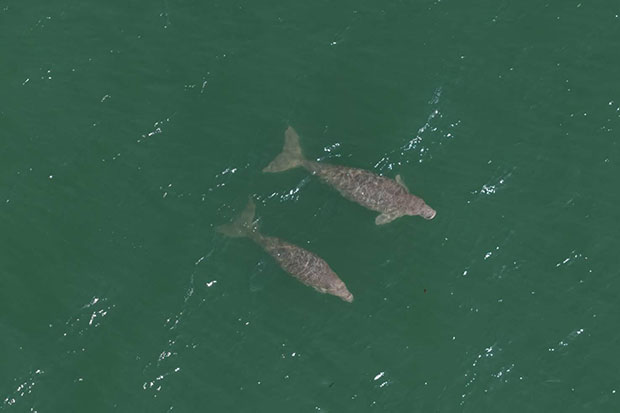Dugong and Turtles Thrive in Krabi, Ecosystem Still Threatened
Krabi’s mother-calf dugong sighting, coupled with increased green turtle numbers, signals potential seagrass ecosystem recovery amidst ongoing habitat threats.

The news out of Krabi province in Thailand is, in a word, encouraging. A new report details the sighting of two new dugongs, believed to be a mother and calf, near Ao Nam Mao, alongside a notable increase in green turtle sightings. This isn’t just a heartwarming anecdote; it hints at something deeper: the possibility, however fragile, of genuine ecological recovery.
For those unfamiliar, the dugong, often called a “sea cow,” is a vulnerable marine mammal whose survival is intimately tied to the health of seagrass ecosystems. These ecosystems, in turn, are vital for a vast array of marine life, including the green turtles also observed. That both species are thriving in this area suggests a positive feedback loop—a sign that conservation efforts, combined with favorable environmental conditions, may be yielding tangible results.
But let’s not mistake a promising development for a decisive victory. The challenges facing these creatures, and the ecosystems they depend on, remain immense. The sighting of a mother and calf is particularly significant, highlighting the potential for population growth. However, this also brings into stark relief the necessity to maintain a safe and thriving habitat for this population to grow. Factors impacting the sustainability of this marine life include, but aren’t limited to:
- Habitat Destruction: Coastal development, dredging, and destructive fishing practices continue to threaten seagrass beds globally.
- Pollution: Runoff from agriculture and industry introduces pollutants into the water, harming marine life and degrading habitats.
- Climate Change: Rising sea temperatures and ocean acidification pose significant threats to both seagrass and the animals that rely on it.
- Poaching and Entanglement: Despite legal protections, dugongs and green turtles can still fall victim to hunting and accidental entanglement in fishing gear.
The success in Krabi highlights a critical dynamic at play in conservation: focused intervention, coupled with a bit of luck (favorable weather conditions), can create pockets of resilience. But these pockets remain vulnerable to larger systemic forces.
The presence of dugongs and green turtles isn’t just a signal of a healthy ecosystem; it’s a demand for its continued protection. Their well-being is inextricably linked to our own, and their survival hinges on our willingness to prioritize long-term ecological health over short-term economic gains.
Ultimately, the story out of Krabi isn’t just about dugongs and turtles; it’s about the choices we make as a society. Will we continue to prioritize unsustainable practices that degrade the environment, or will we embrace policies that foster ecological resilience and ensure the long-term survival of these magnificent creatures? The answer, as always, lies in the systems we build and the values we choose to uphold. This sighting in Thailand offers a glimmer of hope, but it’s a hope that demands constant vigilance and unwavering commitment.









